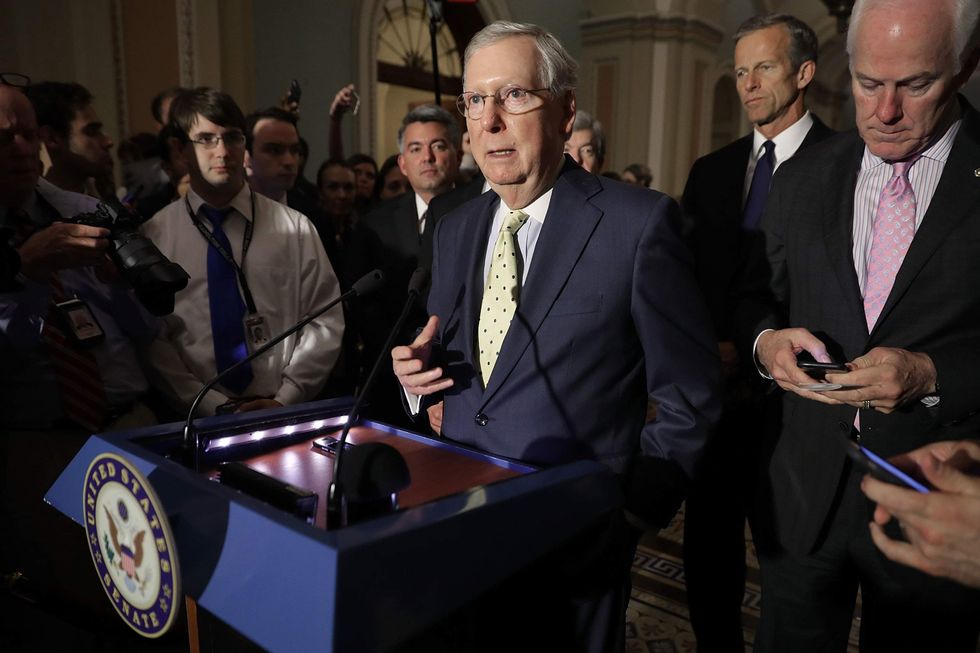Republicans in the Senate finally unveiled their health care bill Thursday after spending nearly two months crafting the legislation behind closed doors. Majority Leader Mitch McConnell (R-Ky.) has already stated his intention to have a vote on the bill as early as next week as senators scramble to review the 200-page document. Here are the key points from the bill:
It keeps Obamacare premium subsidies in place, but changes the eligibility criteria. Though the bill keeps the hotly debated taxpayer subsidies in place for those who purchase an insurance plan through the Obamacare marketplace, it changes the criteria that determines whether an enrollee is eligible for a subsidy. While Obamacare currently allows a threshold of earnings up to 400 percent of the poverty level, the Senate bill changes that threshold to 350 percent. While this will prevent some middle class earners from receiving a subsidy, the bill also will allow those living below the poverty line to continue to receive subsidies, which aims to provide assistance to those living in states that chose not to expand Medicaid under Obamacare.
It starts a three-year phase out of Medicaid expansion beginning in 2021. The bill continues the Medicaid expansion funding for Obamacare until 2021, when the phase out would be slated to start. The previous version of the bill passed in the House ended the expansion in 2020, which earned criticism from some moderates who said the time frame wasn't fair to enrollees. While the Senate bill keeps the House plan to send a fixed amount of money each year to states based on enrollment, the Senate version caps the annual inflation rate to the standard rate, rather than the higher medical inflation rate. States would then be able to decide if they wanted to make cuts to benefits, provider payments, or programs.
It defunds Planned Parenthood for one year. The legislation keeps the House's plan to defund Planned Parenthood for one year. According to Planned Parenthood's 2014-15 annual report, the organization receives around $553.7 million annually in government health service grants and reimbursements, which totals to about 43 percent of its overall revenue.
It maintains Obamacare-era pre-existing condition regulations. The Senate's legislation deviates from the previously passed House bill, which gave states the ability to eliminate pre-existing condition protections if certain criteria were met. In the Senate's version, the bill does not include waivers for states to opt-out of covering enrollees with pre-existing conditions.
It eliminates the individual mandate. The bill eliminates the mandate put into place by the Affordable Care Act that requires all Americans to have a certain level of health insurance or pay a tax penalty.
It repeals almost all Obamacare taxes. The only tax that is kept from the numerous taxes implemented under Obamacare is the infamous Cadillac tax, which requires employers who purchase high-cost benefits for their employees to pay an excise tax. Instead of eliminating this tax, the Senate plan delays the tax until 2026.




